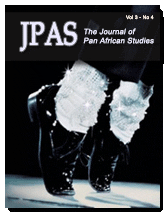Scholarly Peer-Reviewed Contributions

Surgeon Anxiety and Jehovah’s Witness Patients: Determining the Effects of Educational Intervention
Carr, Firpo W PhD, MAUM, MAM, BS

“Michael Jackson Motivated,” by Dr. Firpo Carr, The Journal of Pan African Studies, March 2010, Vol. 3, No. 7., pp. 42 – 44.

Dr. Firpo Carr, coauthor of the article “Jehovah’s Witnesses” in the two-volume encyclopedia set, African American Religious Cultures (2009)
Publisher’s Preface for Publication of Leningradensis [Codex Leningrad B19a, or, Leningrad Codex] •
Released: 1998 (shown further below)
Firpo Carr made a historic trip to the Soviet Union in January 1989, where he took color photos, for the first time, of pages from the oldest, most complete version of the Hebrew Bible in the world. Another group of scholars headed by USC’s Bruce Zuckerman followed and photographed the entire Hebrew Bible in color but were required to have a letter of introduction from Firpo, which he happily provided.
Unfortunately, when they released the printed edition, they failed to mention Firpo’s contribution. Of him, they wrote: “Firpo Carr of IBM, who had worked with Bruce Zuckerman on a couple of projects and knew Leningrad and the library, made a friend of the director of oriental manuscripts in the library, Dr. Victor Lebedev, and talked with him about our intentions. Carr returned to assure us.”
Sadly, adding insult to injury, Carr’s name was removed entirely from the preface of the new edition in favor of an unknown character. The new preface reads in part:
“Then came Soviet Chairman Gorbachev’s policy of Glasnost and the window of opportunity we needed. A colleague at Claremont, Professor Fred Warner Neal, a sovietologist at the Claremont Graduate School, who frequently travels to that part of the world, approached the authorities at the Leningrad library on our behalf and initiated conversations about the possibility and feasibility of such a project.”
The world of biblical scholarship embraced the deception, including the prestigious international journal Biblical Archaeology Review, which initially printed that Zuckerman and his crew preceded Carr in photographing any part of the manuscript in color.
However, this situation was later begrudgingly corrected. In Biblical Archaeology Review, Volume 18 Number 5. September/October 1992. Title (BARlines): “Firpo W. Carr Was First,” by Herschel Shanks, Editor, Staff Writer:
“The BAS-published book The Dead Sea Scrolls After Forty Years contains a color plate (5) and a black-and-white photo (p. 67) from the Leningrad Codex, dating to about 1008, the second oldest Masoretic text of the Hebrew Bible. Bruce and Kenneth Zuckerman of West Semitic Research were properly credited as the photographers of those pictures, but we incorrectly identified them as the first to make these photographs available outside Russia.
“Actually Firpo W. Carr of Scholar Technological Institute of Research, Inc., in 1989 was the first foreigner to gain access to and photograph a number of items from the collection in the Leningrad (now St. Petersburg) state library. At the time Carr photographed, in color, the carpet page from the Leningrad Codex, preceding the Zuckermans by over a year in providing such photographs to the West.”
For more detailed information on the subject, click here Racism in Bible Scholarship: Dr. Firpo Carr and ancient Afro-Hebrew Manuscripts in the Soviet Union – YouTube.
[NOTE: The entire preface of the later edition reads: “It is a source of pride for the Ancient Biblical Manuscript Center, and West Semitic Research, along with the University of Michigan, to offer the world of biblical scholarship this facsimile edition of Leningradensis, the oldest complete Hebrew Bible in the world. A microfilm copy of the Codex which has been used for the printed editions of Biblia Hebraica (1937) and Biblia Hebraica Stuttgartensia (1967/1977) has existed for over sixty years. A facsimile edition of the Codex using the available films was published by Makor Press in 1970. Even so, it was clear that the Codex should be rephotographed using the latest technology.
“Dr. Harold Scanlin, of the American and United Bible Societies, early in 1988 suggested we mount a project to do just that. Our trusties, Professor David Noel Freedman and Professor Astrid Beck of the University of Michigan, soon thereafter urged us to use our relations with the Saltykov-Shchedrin State Public Library in Leningrad, now The Russian National Library in St. Petersburg, to start conversations with contacts there about rephotographing the Codex.
“We had had acquisitions contacts with officials at the Leningrad library since October of 1981, but entertained little hope of getting their permission to go in and is our understanding that no foreign photographer or team had been allowed to do such work in their collection.
“Then came Soviet Chairman Gorbachev’s policy of Glasnost and the window of opportunity we needed. A colleague at Claremont, Professor Fred Warner Neal, a sovietologist at the Claremont Graduate School, who frequently travels to that part of the world, approached the authorities at the Leningrad library on our behalf and initiated conversations about the possibility and feasibility of such a project. Professor Michael Klein of the Hebrew Union College in Jerusalem, who is editor of the Cairo Geniza fragments of the Palestinian Targum, knew the academic and library situation in Moscow and Leningrad and was a great help to us in mapping strategy.”
